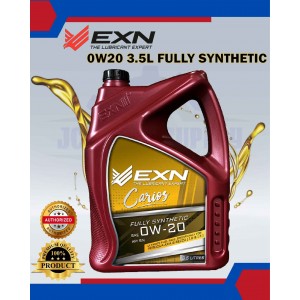Buy best and quality EXN products

EXN-The World Lubricant Experts
Exn using the latest technology called Moly Tech & Nano Technology in manufacturing EXN Oil. The Moly Tech & Nano Technology Special Combine in EXN Engine Oil Additive serves the purpose to protect and extend the life of your auto engine and oil through mechanical.
MolyTech and nanotechnology are both terms that are sometimes used in the context of engine oils and other lubricants to improve performance, reduce friction, and enhance the longevity of engine components. Let’s break down each of these concepts:MolyTech (Molybdenum-based Technology)
MolyTech and nanotechnology are both terms that are sometimes used in the context of engine oils and other lubricants to improve performance, reduce friction, and enhance the longevity of engine components. Let’s break down each of these concepts:
MolyTech (Molybdenum-based Technology)
nanotechnologyengine oils
MolyTech refers to the use of molybdenum disulfide (MoS₂) or similar molybdenum compounds in engine oils. Molybdenum is a metal with excellent lubricating properties, which makes it highly effective at reducing friction and wear in engine parts. When added to engine oil, molybdenum creates a lubricating film that helps:
Reduce friction: Molybdenum disulfide has a unique ability to reduce metal-to-metal contact, which helps lower friction between moving parts, improving fuel efficiency and overall engine performance.
Reduce wear: The lubricating film formed by molybdenum acts as a protective barrier, reducing the wear and tear on critical engine parts, especially under high pressure or extreme conditions.
Improve engine protection: MolyTech can enhance the oil’s performance in high-stress situations, such as during cold starts, when the engine oil is thick and there’s more wear due to friction before the oil fully circulates.
Benefits of MolyTech:
- Enhanced engine protection and durability.
- Reduced friction, which can improve fuel economy.
- Better performance under extreme conditions (high temperatures, heavy loads, etc.).
Molybdenum disulfide is sometimes referred to as a "solid lubricant," and when added to engine oils or additives, it forms a protective layer on engine components, improving their lifespan and efficiency.
Nanotechnology in Engine Oil
Nanotechnology in engine oil refers to the use of nanoparticles or nano-sized additives that are designed to enhance the oil’s performance at a microscopic level. Nanoparticles are typically smaller than 100 nanometers (nm), and in the case of engine oil, these tiny particles can provide a range of benefits:
Improved lubrication: Nanoparticles are extremely effective at reducing friction, as their small size allows them to penetrate and adhere to surfaces that might be difficult for traditional lubricants to reach. This provides a more uniform layer of lubrication and can help reduce wear over time.
Enhanced wear protection: Some nanomaterials, like fullerenes (a form of carbon) or nano-diamonds, can create ultra-hard surfaces or act as tiny "ball bearings" between engine parts, further reducing metal-to-metal contact and wear.
Increased efficiency: Nanotechnology can help improve the flow properties of the oil, allowing it to more easily circulate and coat engine parts, leading to better fuel economy and smoother engine operation.
Better heat dissipation: Nanoparticles can improve the heat transfer properties of the oil, which helps regulate engine temperature and reduce the risk of overheating.
Longer oil life: Because nanoparticles can reduce oxidation and contamination within the oil, engine oils with nanotechnology can potentially last longer before requiring a change.
Benefits of Nanotechnology in Engine Oil:
- Reduced friction and wear.
- Increased fuel efficiency and smoother engine operation.
- Better protection in extreme temperatures.
- Longer oil life and better overall engine health.
How MolyTech and Nanotechnology Work Together
Both MolyTech (molybdenum disulfide) and nanotechnology in engine oil aim to achieve similar goals: reducing friction, minimizing wear, and improving the overall efficiency of the engine. However, they use different mechanisms:
MolyTech typically works by forming a lubricating layer on metal surfaces, while nanotechnology involves the use of ultra-small particles that work at a microscopic level to further reduce friction and improve lubrication properties.
Nanotechnology can provide even more precise control over lubrication and protection, especially in hard-to-reach areas, while MolyTech is effective at ensuring robust protection and reducing metal-to-metal contact in the engine.
In Summary:
- MolyTech is based on molybdenum disulfide, which reduces friction and wear in engines by forming a lubricating film.
- Nanotechnology in engine oil uses ultra-small particles to further enhance lubrication, improve heat dissipation, and protect engine components at a microscopic level.
Both of these technologies aim to extend the life of the engine, improve fuel economy, and provide superior protection under various driving conditions.
-530x530.png)




/WEB%20EXN%20Emplios%20Premium%20Mineral%20Engine%20Oil%20(SAE%2015W40)%20-%20API%20CI-4%20Turbo%20Plus%20-7L-300x300h.jpg)











